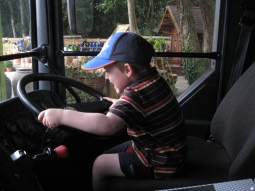Francesca considers the tricky problem of using real people in fiction
In novel class this week, someone brought up the subject of using people we know in our novels. One of the students had received several requests from people to be included in her latest novel, real names and all. An in-depth discussion on the matter ensued. Our tutor (novelist Elaine Everest) pointed out that even if the person concerned gives you permission to use them as a character, DON’T. At some later date they may decide they hate your portrayal of them and sue. Or, if they unfortunately die, their family might sue instead.
It’s possible to get round this by changing their names of course. I believe it’s something writers do all the time in any case. I know I do. Sometimes I’ve chosen the person concerned because they are interesting or their story is fascinating. Sometimes it’s that I have that person in mind as I’m creating a character, because they’re similar. Or bits of different people end up in one character.
My own children have come in very handy, particularly when they were younger and I wanted to create a teenager for a short story (don’t think they’ll sue!) My parents, grandparents, aunts, uncles and cousins and occasionally past friends (or ‘friends’) and acquaintances have all played their part in my make-believe world. Many are long dead or well in the past but I’ve still changed their names. Currently I’m writing something which is based, albeit loosely, on when my parents met.
Now it’s the grandchildren’s turn. Luca was the inspiration for little ‘Cosmo’ who liked his ‘woo woos’ in a long story I nearly had published recently (sadly the anthology didn’t go ahead). His distinctive phrases and facial expressions are easily recognisable in the text. He is cute in the role, so I’m quite happy to tell you it’s him, though I was at pains to point out to my daughter that Cosmo’s mum isn’t her!
The examples I’ve used so far have been, for the most part, nice characters. But what about when we turn a person into someone who isn’t very nice, or even a villain, even though it may not be much of a leap? When I’ve done this it hasn’t been about revenge, (well, maybe a teensy weensy bit) but more because they’d simply make a darned good ‘baddy’. I always find myself looking for reasons why they’re like this, a background that has informed their present, which isn’t necessarily the reality. A lonely. impoverished or abusive childhood? Let down by a lover? Bullied at school? We should do this with all our main characters of course, but it’s particularly poignant with the rogues. They’re often much more fun to play with than the more virtuous characters.
The one thing I would never do is give the ‘bad’ character the real name of someone I knew, however tempting that might be. There’s a good reason why works of fiction start with a disclaimer about the characters in the book being fictitious. We’d all do well to take heed of Elaine’s advice: DON’T!
You can read more about my adventures as a grandmother on my occasional Nonna Blog

